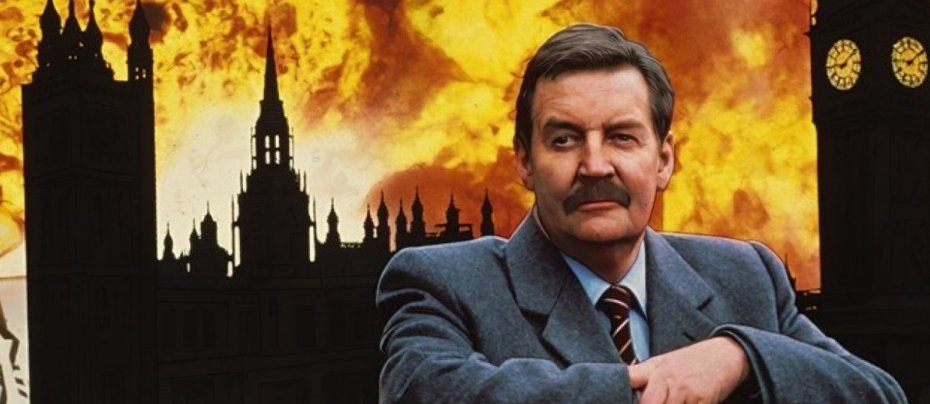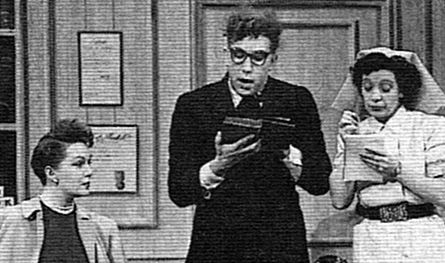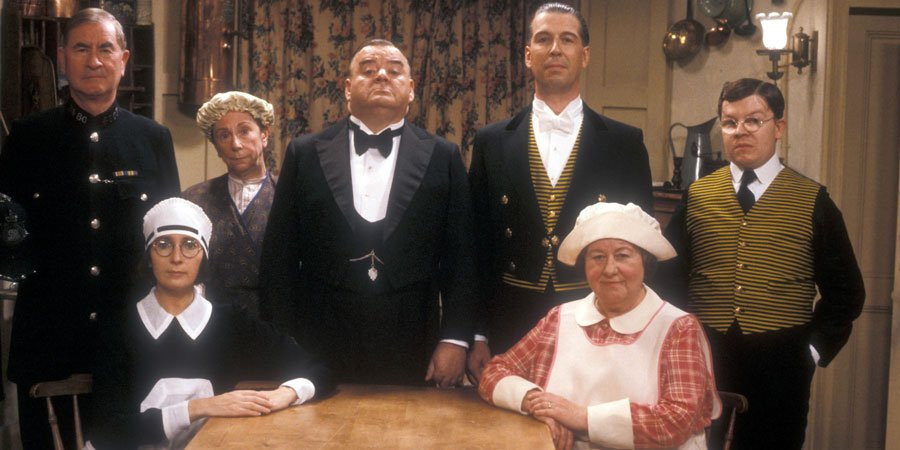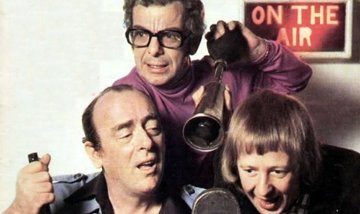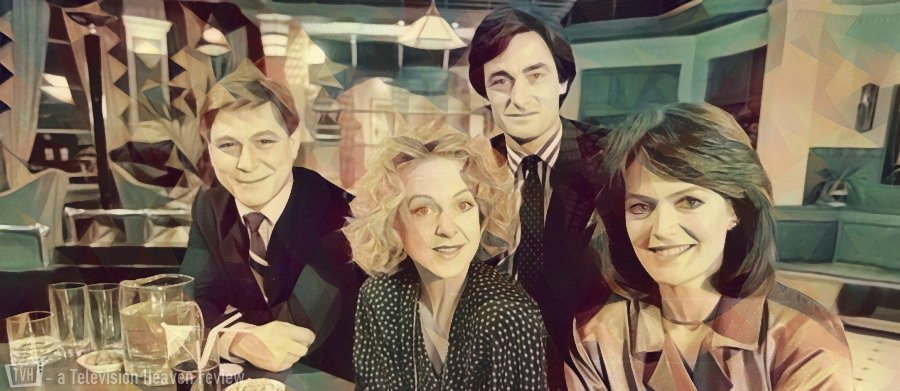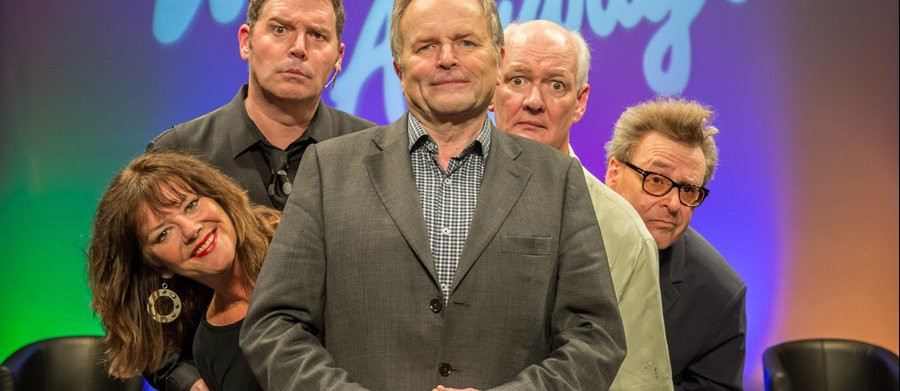
Whose Line Is It Anyway?
1988 - United KingdomBy the late 1980s, Channel Four had established itself as having a set routine for comedy shows. Sandwiching a gardening programme on Friday evenings, 9pm and 10pm would be home for a wide range of American imports over many years – such shows as Cheers, The Golden Girls, Roseanne, Friends and Frasier all found a loyal following. At the later 10.30 slot, the fledgling channel allowed itself to be a little more daring and so it was that in 1988 they brought improvisation show Whose Line Is It Anyway? to the screens.
'Whose Line…' had started life as a radio show for the BBC. There it gained a successful reputation, in no small part courtesy of its two headline returning participants, Stephen Fry and John Sessions. Its roots could actually be traced back a little further however. In the late 1970s, Granada produced a short run series called Take The Stage in which established actors such as Rula Lenska, Simon Cadell and even a youthful Victoria Wood would challenge a local theatre school in a game of improvised theatrical situations. Unfortunately for the producers of the show, the expected later evening timeslot that it had seemed more suited to was abandoned as Granada looked to fill in the vacant early evening slot that opened up when strikes took Emmerdale Farm off the air. Seemingly, theatrical improvisation was not what Emmerdale Farm viewers wanted to see, and the show soon disappeared from the schedules.
'Whose Line' was very much a variation on Take The Stage, with performers asked to conjure up improvisations in film and theatre styles, or take part in a game called Party Quirks where each had a different quirk or way of behaving that needed diagnosing by the party’s host. 'Whose Line’s' radio success encouraged its creators Dan Patterson and Mark Leveson to tout a television option. The BBC took too long to decide whether to take the gamble and so Channel Four seized the opportunity.
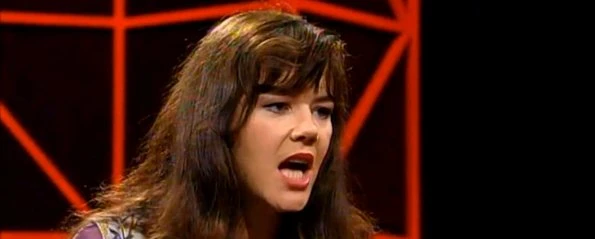
The early few series largely followed the same format as the radio, with John Sessions the returning resident each week. Hosted by Clive Anderson, himself almost as essential to the show’s success with his acerbic put downs as the competing four performers were, the programme began to build up a healthy following. Some of the UK’s finest emerging talents would be among the guests in the early days, such as Josie Lawrence and Paul Merton, and there would be a regular slot for an American unknown to try his or her hand at the game. Stephen Fry would re-appear on the odd occasion, but he wasn’t a regular guest as he had been on radio.
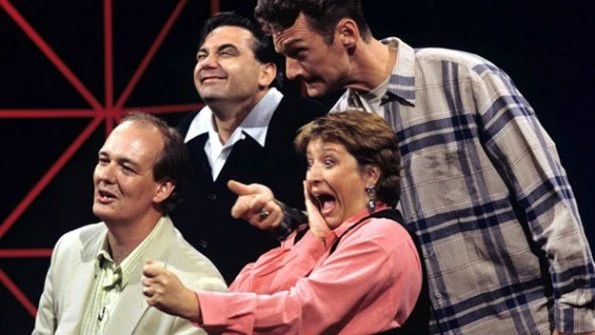
As the programme continued, its theme seemed to change. Instead of heavy high-brow improvisations in the style of Shakespeare or Dostoevsky, as Tony Slattery joined the show so there seemed a leaning towards more mainstream humour. The success of the programme continued unabated however, and the flow of guests would provide some regular future improvisers such as Ryan Stiles, Colin Mochrie, Mike McShane and Greg Proops.
In the closing years, the American performers were more of a fixture than any domestic talent. The show remained enjoyable, but Channel Four pulled the plug. Many of the Americans became resident guests as the format was rebooted in the US with Drew Carey as a host and despite a brief cancellation, Whose Line Is It Anyway? continues across the Atlantic to this day.
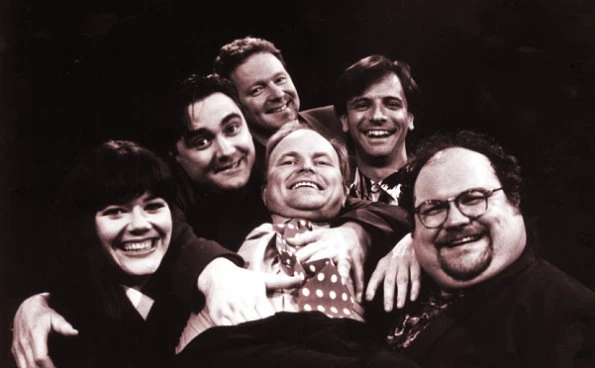
As a bi-product of its UK success, plenty of opportunities arose for some of the series more successful participants. Slattery would pair off with McShane for their own improvisation series, S&M, while McShane would also appear in one series of comedy with Sandi Toksvig, entitled The Big One. Paul Merton meanwhile would go from strength to strength with his residency on the legendary radio show Just A Minute after the passing of Kenneth Williams, and would also tour theatres with a show simply titled Paul Merton’s Impro Chums.
Although 'Whose Line…' changed significantly in its games and its humour levels, there’s no doubt that it set a standard for improvisation and could perhaps be considered a pre-cursor to some of the panel shows seen today. QI and Have I Got News For You go from strength to strength, but in reality, panel shows were not frequently seen in the TV schedules until Whose Line Is It Anyway?. The idea of having regular competitors mixed and matched with comic or theatrical talent is now seen as the norm on these programmes, and both have seen Clive Anderson appear on a number of occasions.
'Whose Line…' was perfect Friday evening material. Initially inventive, sometimes irreverent, it established a host of stars from its ever changing line-up and was ideally suited for Channel Four’s ground-breaking schedule of the 1980s. Whether downloading old shows or viewing the current American offering, the format still has an audience, both of its own and in the theatrical and television offshoots that it can justifiably take some credit for.
Seen this show? How do you rate it?
Seen this show? How do you rate it?
Published on May 1st, 2019. Written by Brian Slade for Television Heaven.





